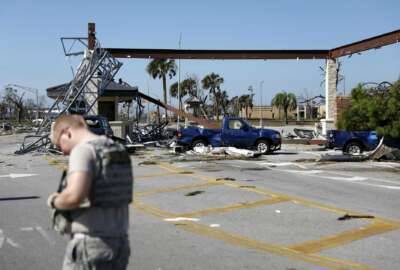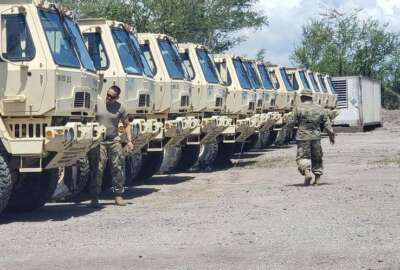
Already stressed National Guard preparing for more active than normal hurricane season
Weather experts are expecting a hurricane season with 30% more storms than usual.
The National Guard is expecting a more active than normal hurricane season this year, putting more stress on a force that is being used more than it has since World War II.
Weather experts predict a hurricane season 30% more active than normal.
“We’re tracking as many as 16 named storms this year,” Air Force Maj Gen. Steven Nordhaus, director of the National Guard Bureau operations, told reporters Monday during a phone call. “A normal year might be eight to 12.”
Earlier this month, the National Guard had 120,000 troops activated— accounting for about one-fourth of the total Guard force and the most Guardsmen deployed since the 1940s.
“Roughly 37,000 were conducting COVID-19 operations, 43,000 for civil disturbance, 22,000 on overseas missions and 17,000 in the United States either doing other types of domestic missions or supporting homeland defense missions,” Nordhaus said.
States like Florida, Texas, Georgia, South Carolina and North Carolina are especially preparing for the season to come since they tend to be in the pathway of hurricanes that make landfall.
“The Florida Guard has wide ranging capabilities in the state that includes security, aviation, humanitarian evacuation, transportation and search and rescue,” Florida National Guard Adjutant General Maj. Gen. James Eifert said. “We have unparalleled experience in support of civil authorities to include recent responses to major hurricanes Matthew, Irma, and Michael, which was a strongest hurricane on landfall landfall on record in the Florida panhandle.”
Hurricane Michael completely devastated Tyndall Air Force Base in late 2018.
“We have a lot going on, but we were ready for hurricane season,” said Texas National Guard Adjutant General Maj. Gen. Tracy Norris. “We’ve held our hurricane rehearsal on May 28 with all other state agencies and will continue to respond to the governor and the president.”
Currently, Florida has 8,000 of its 12,000 Guardsmen available for hurricane response. Texas has 24,000 total Guardsmen; 3,600 are currently responding to coronavirus and one battalion is preparing to go overseas.
Both the Florida and Texas Guard leaders said they were concerned about the pressure put on the force this year.
“It’s almost impossible to not have people who have done all three deployments,” Nordhaus said referring to Guardsmen who have responded to coronavirus, civil unrest and soon hurricane missions.
Eifert said most Guardsmen have been dealing with no-notice deployment.
“A majority of these people have been away from their families and their jobs,” he said. “They woke up one morning, got called into this duty and have been gone going on four months for some of them. Fatigue is a huge concern for us. The long-term impact of this may not be known for quite a while. We are trying really hard to whittle down the numbers that we currently have on duty to allow our force to reset. We are anticipating that they will be called up at some point if not once, maybe more than once, in Florida over the next three or four months and will get another no-notice call in the middle of the night to come in and support their neighbors.”
The Guard also has to rethink the way it responds to its hurricane missions with the coronavirus outbreak still infecting mass numbers of people.
“The most important thing is that we have to sustain the force,” Norris said. “Screening every day, making sure you wash your hands, you wear a mask when you can’t social distance are all necessary. We’re living in that environment, so those are becoming second nature. We have to be well in order to respond. That’s what I have told our soldiers and airmen about every single day because we’re going to respond to that hurricane and we’re going to do it under the safest conditions possible.”
Copyright © 2025 Federal News Network. All rights reserved. This website is not intended for users located within the European Economic Area.
Scott Maucione is a defense reporter for Federal News Network and reports on human capital, workforce and the Defense Department at-large.
Follow @smaucioneWFED
Related Stories





